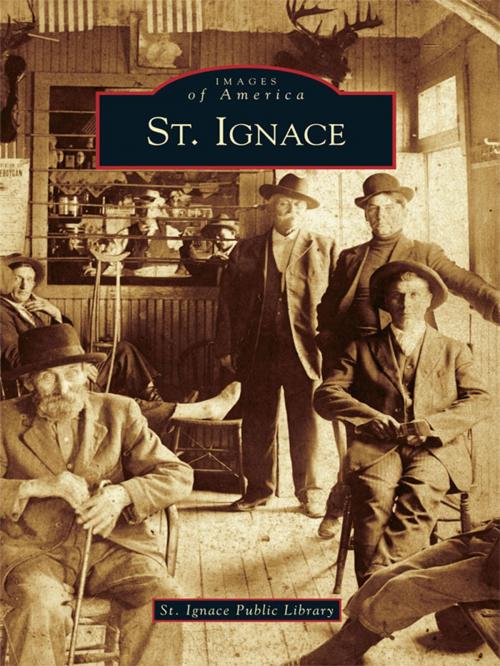| Author: | St. Ignace Public Library | ISBN: | 9781439636879 |
| Publisher: | Arcadia Publishing Inc. | Publication: | October 20, 2008 |
| Imprint: | Arcadia Publishing | Language: | English |
| Author: | St. Ignace Public Library |
| ISBN: | 9781439636879 |
| Publisher: | Arcadia Publishing Inc. |
| Publication: | October 20, 2008 |
| Imprint: | Arcadia Publishing |
| Language: | English |
Even before it was named in 1671, St. Ignace was a key part of Michigan history. Before Fr. Jacques Marquette and the Jesuits arrived in the Straits of Mackinac, St. Ignace had a large Native American settlement. With the arrival of the French, fur trading became an important industry. St. Ignace became the county seat in 1882. By the mid-1800s, fishing, shipping, manufacturing, and lumbering were a crucial part of St. Ignace activity. As these industries died down, tourism increased. The area was appealing to tourists for its natural beauty and its fresh air; many came for relief from hay fever and asthma. Initially travelers arrived by ship and train. Ferryboats were important in transporting visitors and goods because of the primitive road system. With its natural harbor, St. Ignace was within easy reach of other Great Lakes ports. With the completion of the Mackinac Bridge in 1957, travel to St. Ignace became much easier. St. Ignace is often referred to as the �Gateway to the Upper Peninsula.�
Even before it was named in 1671, St. Ignace was a key part of Michigan history. Before Fr. Jacques Marquette and the Jesuits arrived in the Straits of Mackinac, St. Ignace had a large Native American settlement. With the arrival of the French, fur trading became an important industry. St. Ignace became the county seat in 1882. By the mid-1800s, fishing, shipping, manufacturing, and lumbering were a crucial part of St. Ignace activity. As these industries died down, tourism increased. The area was appealing to tourists for its natural beauty and its fresh air; many came for relief from hay fever and asthma. Initially travelers arrived by ship and train. Ferryboats were important in transporting visitors and goods because of the primitive road system. With its natural harbor, St. Ignace was within easy reach of other Great Lakes ports. With the completion of the Mackinac Bridge in 1957, travel to St. Ignace became much easier. St. Ignace is often referred to as the �Gateway to the Upper Peninsula.�















